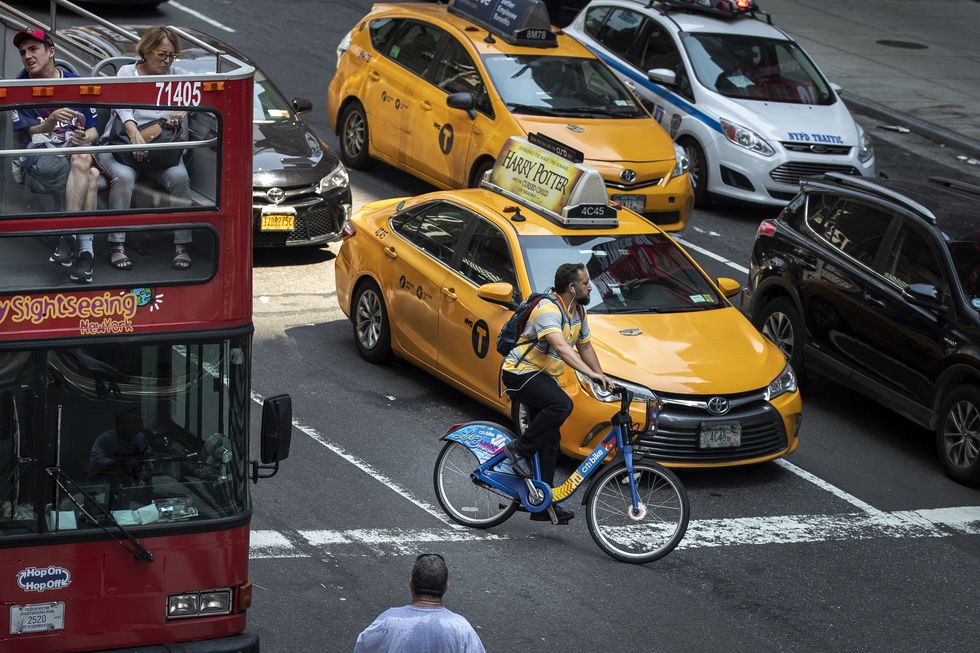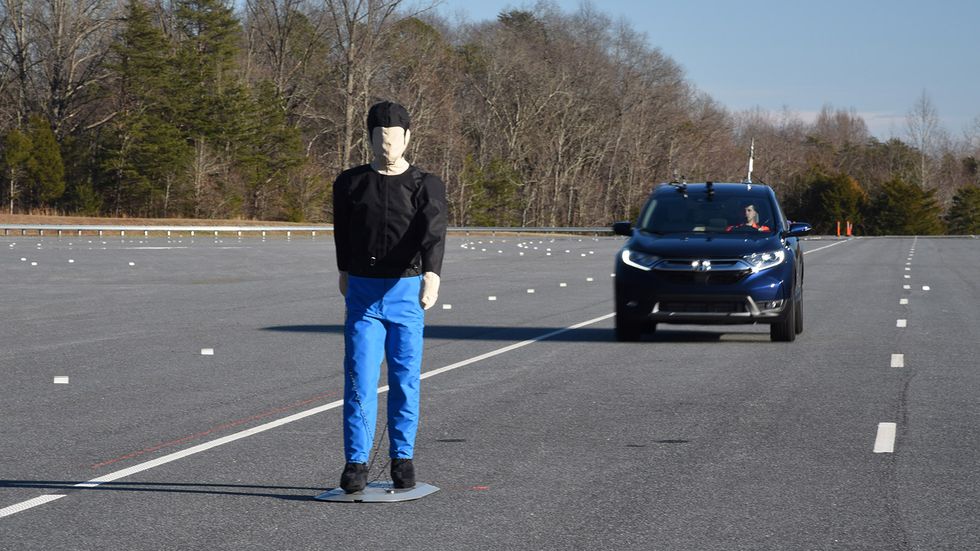- Road safety is at a critical point in the United States and the National Highway Traffic Safety Administration is planning to improve safety for pedestrians.
- The agency is proposing that new US-sold vehicles adhere to the pedestrian standards of the European New Car Assessment Program, with specific injury limitations set in a 25-mph crash test.
- Pedestrian deaths by vehicle were at their highest point in 40 years by the end of 2021, with overall pedestrian fatalities up 37% since 2000.
If you’ve felt a rise in dangerous driving, crashes, or just a general unease on the road lately, you’re not alone. Statistics from the National Highway Traffic Safety Administration and the Insurance Institute for Highway Safety show that injuries and fatalities are rising for drivers, pedestrians, and cyclists alike.
Nationally, pedestrian deaths have risen over 80% since 2008, with government officials and advocacy groups sounding the alarm for the past three years. Now, the NHTSA is teaming up with the Biden administration to propose a new set of vehicle safety requirements with pedestrians in mind.
For the most part, these proposed rules will fall in line with part of Europe’s pedestrian safety regulations, commonly known as the New Car Assessment Program (NCAP). If passed, new vehicles will be evaluated for their ability to minimize injuries to the head, pelvis, leg, and knee of pedestrians hit by the front of vehicles, specifically around the bumper, leading edge, hood, and windshield.
The NHTSA says energy absorption and innovative front-end shapes will be the most common design adjustments to ensure adequate safety performance. Specific testing will also take place to ensure equal protection for all genders and children, the report says.
Notably, the agency will score vehicles differently than its European counterparts. Head injury assessment will account for 37.5% of a vehicle’s score, while the upper leg and lower leg impact injury assessments will account for 25% and 37.5%, respectively.
But the bar is being set somewhat low, as NHTSA is proposing pedestrian protection credits to vehicles that score 60% or higher. Additionally, the program will be manufacturer-tested and reported if implemented, though the agency did say it would perform random verification tests on “certain new model year vehicles.”
As the NHTSA opens a request for comment surrounding this program, some are wondering why the agency is acting so urgently now. As with most federal transportation programs, however, the process to get here has been long and convoluted.
In 2015, the agency proposed sweeping changes to then-dated new car crash assessment standards, followed by a series of public meetings surrounding crash standards and ADAS mandates ending in 2022.
“While passenger vehicle occupant fatalities decreased from 32,225 in 2000 to 23,824 in 2020, during that same timeframe, pedestrian fatalities increased by 37%, from 4739 in 2000 to 6516 in 2020,” reads the National Highway Traffic Safety Administration’s public request for comment on its newly proposed Pedestrian Protection Testing program.
All told, pedestrian fatalities made up 17% of traffic fatalities in 2020. These are concerning statistics to consider—that vehicle safety has improved while pedestrian safety has deteriorated, but not an entirely surprising one when you remember that there isn’t actually a national pedestrian protection program in place.
Loose standards around advanced driver assistance systems do exist (with systems like automatic emergency braking focused on pedestrian safety), but there are no specific regulations to enforce vehicle standards in the name of wayfarer safety. This program would be the first of its kind in the US, according to the NHTSA report. And a group of 32 congressional members is urging the NHTSA to take swift action in the name of road safety.
“Nearly all vehicles sold today earn four- or five-star NCAP safety ratings, including the vehicles that are most likely to kill pedestrians,” the lawmakers wrote. “As the National Highway Traffic Safety Administration (NHTSA) works on updating the federal vehicle safety ratings program, we respectfully urge you to include pedestrian protection and visibility from the driver’s seat as key criteria for vehicles to score the highest safety star ratings.”
These legislators were joined by advocates from America Walks, the National Association of City Transportation Officials, Families for Safe Streets, and Transportation for America in voicing concern about increasing ride heights, unacceptable blind spots, and the general lack of regulation. But automakers and industry allies have questioned whether these pedestrian protection programs would actually be effective without meaningful changes to US road design.
Specifically, BMW remarked that US regulators shouldn’t rely on the successful examples of pedestrian protection programs in Japan or Germany due to the difference in road quality, though analysts at the NHTSA quickly shot this theory down. Additionally, Ford questioned the split leg impact scoring methodology due to stark differences in ride height across models.
In response, federal regulators asserted that no remaining technical issues prevent the use of the upper leg form in pedestrian impact tests, though it will seek additional comments on the matter at this time.
Going forward, the push toward pedestrian protection programs will no doubt face challenges, as automakers grapple with another layer of crash testing. However, the benefits simply outweigh the design shifts incurred by automakers, and the NHTSA admits this itself.
“…the agency believes that as a society, most consumers are also interested in protecting people that share their roads. Hence, there is an unquantifiable value to consumers and to the society as a whole for the agency to provide accurate and comparable vehicle safety information about protecting all lives.”
Are you finding roads to be more dangerous lately? Please share your experiences below.
Associate Editor
A New York transplant hailing from the Pacific Northwest, Emmet White has a passion for anything that goes: cars, bicycles, planes, and motorcycles. After learning to ride at 17, Emmet worked in the motorcycle industry before joining Autoweek in 2022. The woes of alternate side parking have kept his fleet moderate, with a 2014 Volkswagen Jetta GLI and a 2003 Honda Nighthawk 750 street parked in his South Brooklyn community.
Read the full article here




